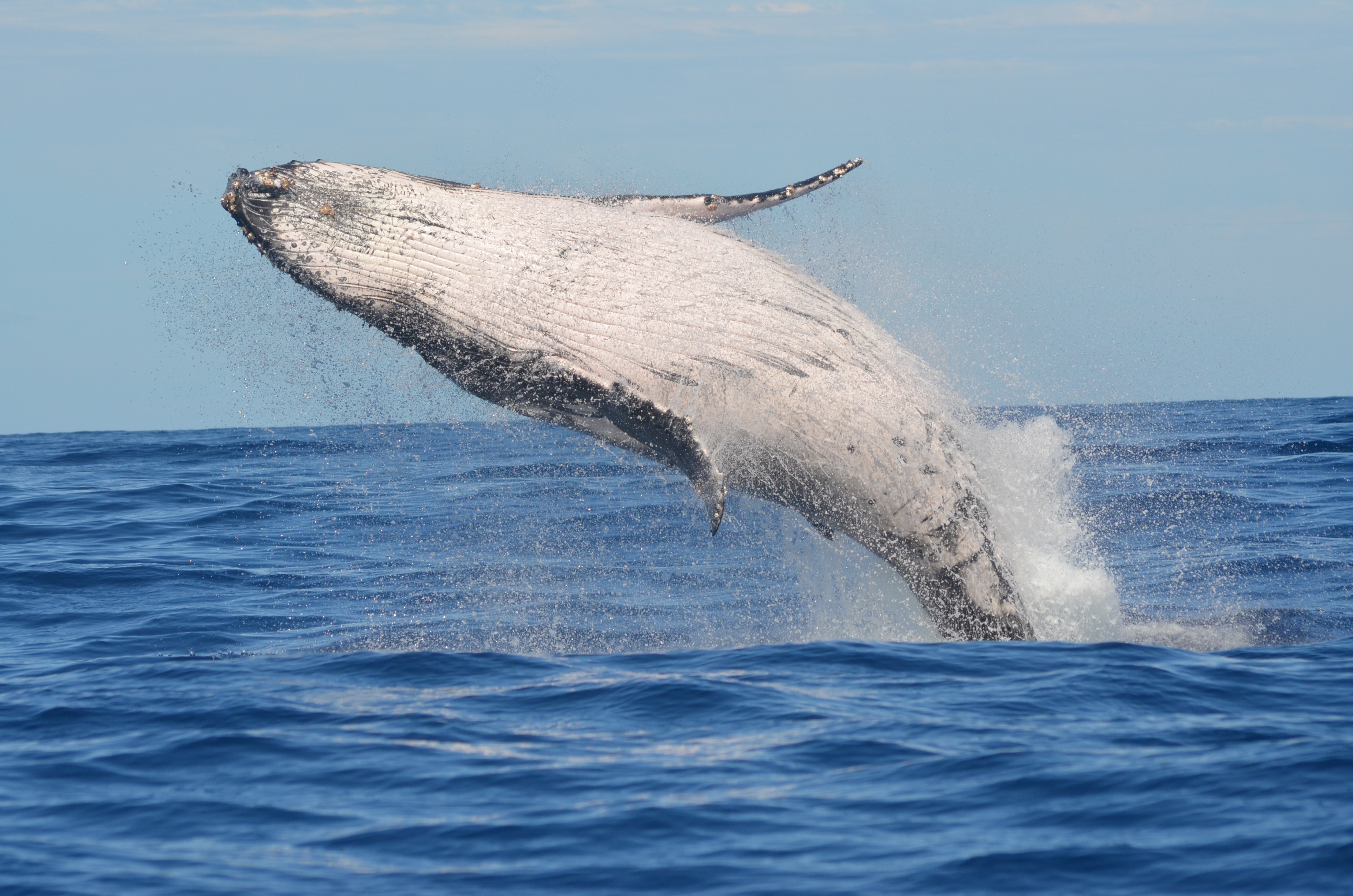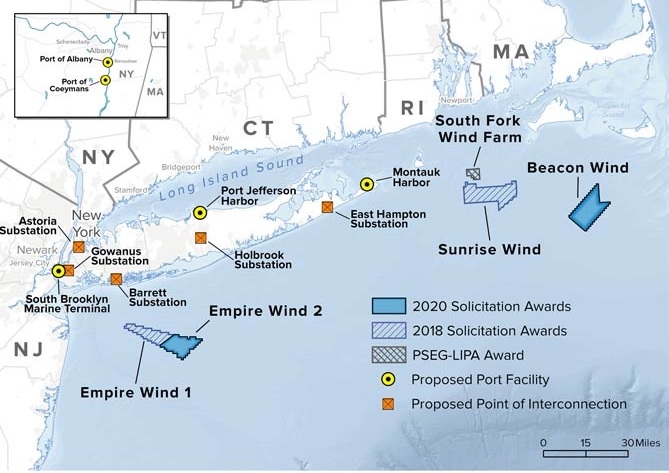by Ellen Cardone Banks, Conservation Chair
After more than a decade of advocacy and planning, the first offshore wind (OSW) project in the New York Bight is under way. (A bight is a wide bay; in this case the long curve of the Atlantic coast from Rhode Island and Connecticut to New Jersey.) The Beacon Wind South Fork project’s cable to bring power to land has been laid, the substation is being upgraded, and the turbines themselves should be operational by the end of this year. The first turbines are expected to start generating power by the end of 2023, with several more projects being planned.
Offshore wind is an essential part of the transition from fossil fuel to renewable energy. The 2019 Climate Leadership and Community Protection Act (CLCPA) calls for 9 Gigawatts (1 GW= 1,000 Megawatts) of OSW. Empire Wind and Beacon Wind are anticipated to power at least 2.4 million homes and will support 6,800 jobs.
The Sierra Club has been supportive of properly sited OSW from the beginning and is part of the OSW Alliance, along with other environmental advocacy organizations, government agencies, and wind power developers. All these wind power advocates have been committed throughout the process to protection of wildlife at wind power sites in and above the Atlantic.
Recently, anti-renewable energy organizations and media in New York and New Jersey have tried to hijack an unfortunate increase in whale deaths on their shores to blame offshore wind. It’s a bizarre argument since there is no offshore wind there yet, but it has entered the echo chamber of pro-fossil fuel, anti-renewable communications and misled people who are not familiar with OSW.
 Since 2016, 174 humpback whale deaths have been reported across 13 Atlantic coast states. Marine scientists attribute this increase to the increase in whale populations, a probable consequence of ocean warming and changes in the location of food stocks. (Humpbacks are baleen whales that consume krill-small crustaceans- and small fish, unlike toothed whales like dolphins and orcas that hunt larger prey.) The whales’ seasonal migration patterns bring them close to shipping lanes. Of the whale remains that have been studied, 40% of deaths are attributed to ship collisions and entanglement in fishing nets. Not one has had anything to do with wind turbines.
Since 2016, 174 humpback whale deaths have been reported across 13 Atlantic coast states. Marine scientists attribute this increase to the increase in whale populations, a probable consequence of ocean warming and changes in the location of food stocks. (Humpbacks are baleen whales that consume krill-small crustaceans- and small fish, unlike toothed whales like dolphins and orcas that hunt larger prey.) The whales’ seasonal migration patterns bring them close to shipping lanes. Of the whale remains that have been studied, 40% of deaths are attributed to ship collisions and entanglement in fishing nets. Not one has had anything to do with wind turbines.
Nonetheless, as wind turbines begin to be placed in the oceans, there will be temporary risks during construction to whales and other marine life. These risks must be minimized and mitigated. Besides the humpback whale, other species of whales inhabit the New York Bight, including the most endangered right whale, another baleen whale. Government agencies, including the National Oceanic and Atmospheric Agency (NOAA) and Bureau of Ocean Energy Management (BOEM) and the New York State Energy Research and Development Agency (NYSERDA), have been conducting, funding, and assembling studies to plan for the safety of whales, turtles, seals, bats, and sea birds. NYSERDA sponsors a biannual conference of wind/wildlife researchers, which I was privileged to attend in 2022 with about 200 scientists presenting and to report in the Summer 2022 Sierra Atlantic. Government agencies, environmental nonprofits, and wind developers work closely on wildlife protection.
Once in place and operating, wind turbines do not pose harm to marine mammals or fishes. The only existing wind farm operating now on our side of the Atlantic is the 5-turbine one that powers Block Island, which has been accompanied by increased fish populations and tourism and greatly reduced air pollution.
Research strategies for whale and other wildlife protection include population studies in the NY Bight to identify baselines, in order to assess any decrease or increase in marine animals after wind turbines are in place. Another is to learn from the experience of OSW in Northern Europe, where wind power has been active and intensively studied for 20 years; though humpback whales do not inhabit that region, other species do.
Speed reduction regulation for shipping in zones where whales swim is the most important protection for whales, and that includes the ships that will bring wind turbines to their destinations. Speed zones have been in place but not enforced for shippers; NOAA is implementing new enforcement measures. Fishing lines also contribute to whale mortality, and organizations such as Whale and Dolphin Conservation (WDC) advocate for safer types of lines. Sierra Club volunteers can support these efforts.
During wind turbine construction, noise is also a concern, as whales depend on hearing for navigation and communication. Noise abatement such as bubble curtains and whale detection devices that can alert construction vessels to cease operation when whales are near, are among many protective strategies.
The biggest threat to the survival of whales, as with most marine and land wildlife, is climate change. Warming seas change food supplies and disrupt migration. Shutting down fossil fuel emissions and moving carefully to renewable wind energy is the best solution for humans who want to save whales and the other species who share our planet.
